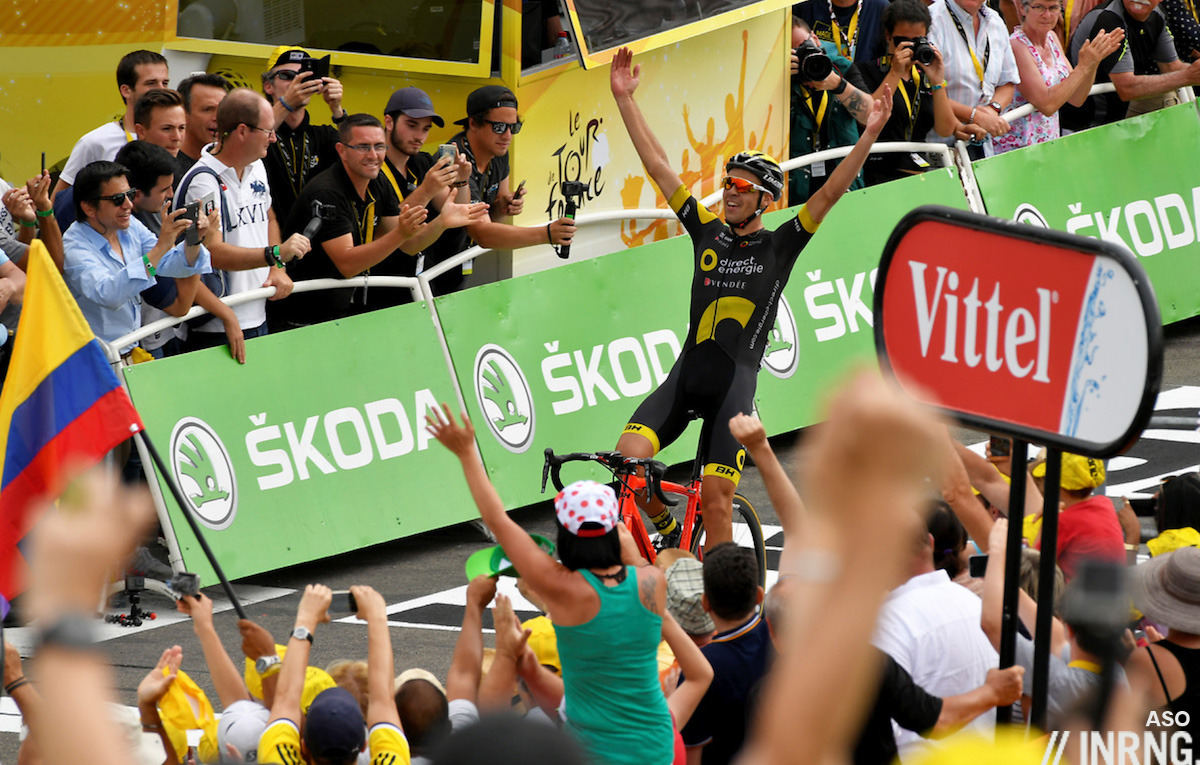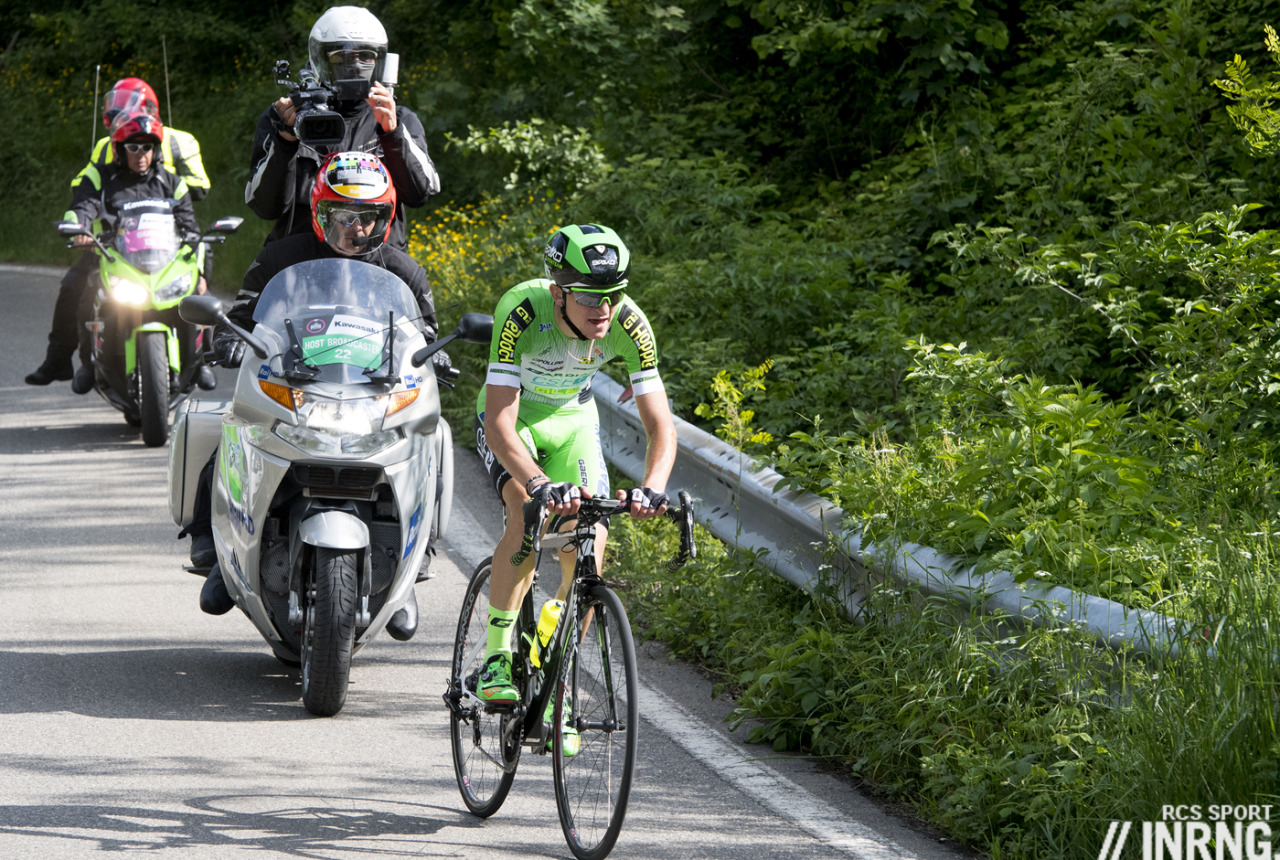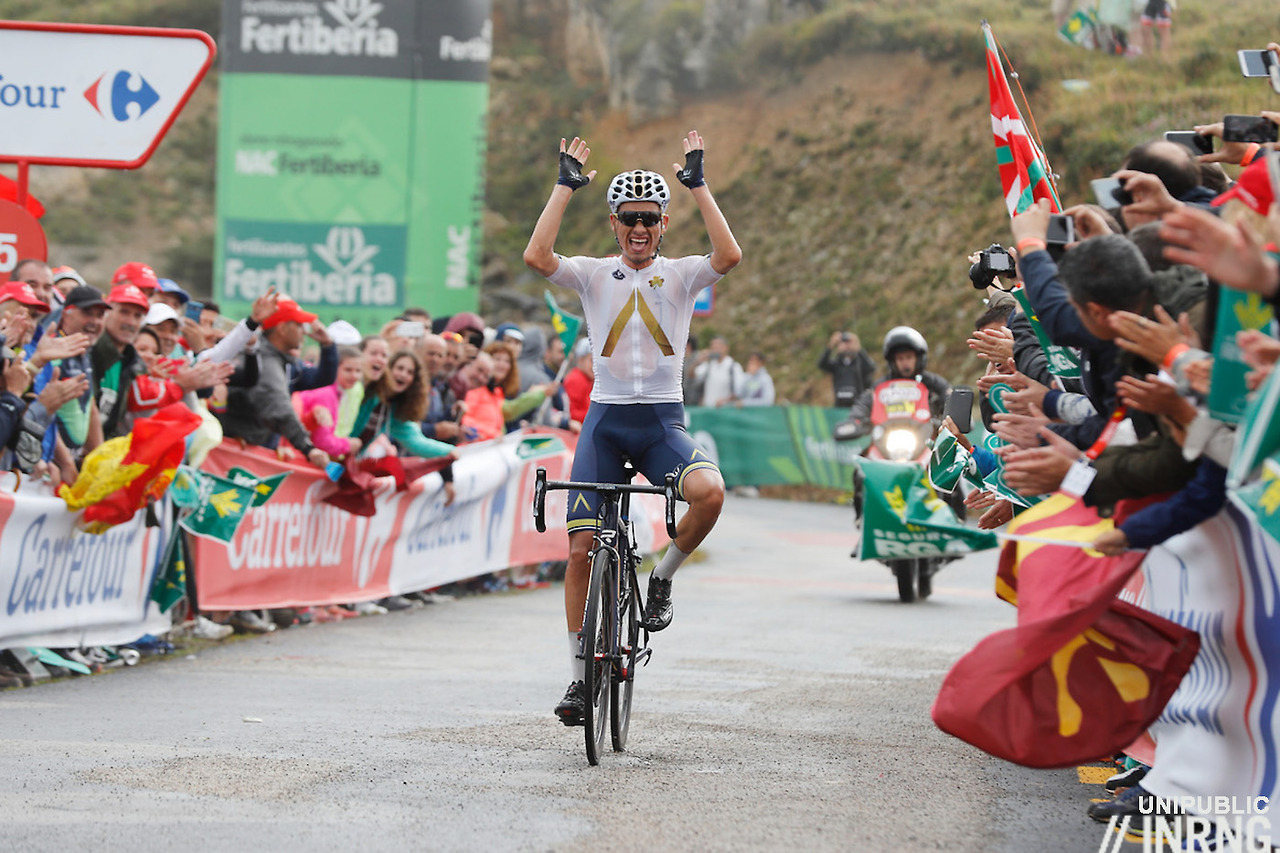Having covered the Pro Continental team sponsors yesterday a reader emailed in to ask what makes a team “Pro Conti”. Good point, the label gets used a lot but what does it really mean? How does a team get this status, which races can take part in and what is a typical budget? All this and more explained below.
The label: “Pro Continental” doesn’t trip off the tongue but the label is instructive, it denotes a professional cycling team subject to a set of UCI regulations, more of which in a minute, and which is attached to a particular “continent” which, geography aside, is the UCI’s way of dividing up the world into Europe, Asia, Africa, America and Oceania. It’s men’s cycling’s second tier, with 27 squads sitting below the 18 World Tour teams and above the 220 or so Continental teams which are more pro am.
Team rules: Pro Conti teams follow a similar set of rules to the World Tour teams but not identical, each having their own chapter in the UCI rulebook. Typically Pro Conti is a kind of World Tour lite, for example all riders must be salaried but the minimum wage of €30,855 compared is lower than the €38,115 for World Tour riders. When it comes to the size only 16 riders are required but there must also be at least three full-time sporting directors and five support staff.
There’s a hefty bank guarantee too amounting to 25% of the team payroll which protects riders and staff in the event of the team folding mid-season but it is significant hurdle for smaller teams to clear to get a licence. Similarly teams must present audited accounts to the UCI each autumn in order to be registered for the following year.
The usual admin, financial and ethical criteria apply but not the sporting ones, there is no minimum standard or number of ranking points needed. See the inclusion of Hagens Bermans Axeon in the Pro Conti ranks for 2018, they’re largely made up of promising neo-pros with few UCI points between them but gain a spot because the team has the requisite financial backing and got its paperwork in. Reductio ad absurdum if you have the money you could round up 16 friends and create a pro team composed of your pals (women included as nothing precludes this in the rules) but good luck getting invitations.
Budget: this varies a lot, whatever the differences in the World Tour, the smallest team is one one third of the biggest. But in the Pro Conti ranks it can be ten times or more. According to regulatory filings in 2016 Cofidis spent €9.9 million and employed 54 people. Wanty-Groupe Gobert are one of the few, if not the only team, to reference their budget and state it is €4 million, it’s grown by 250% since the team moved into the Pro Conti ranks. The smaller squads could be on as little as a million Euros; one report says Novo Nordisk’s budget has been cut in half for this year. There’s no typical budget, to quote an average would be to exclude the range suggested above. Remember teams get paid to race: World Tour teams get a minimum allowance of €8,500 per day of racing from race organisers, Pro Conti teams get €3,500.

Racing: Pro Conti teams get invited to World Tour races but there’s no quota. Instead a World Tour race must host the 18 UCI Pro Teams and then it can invite a handful of Pro Conti teams up to the maximum field size of 176.
- .HC is the next level down and up to 70% of the teams may come from among the 18 UCI Pro Teams but UCI Pro Continental and UCI Continental teams can be invited as well as the local national team
- *.1 is another step down where up to 50% of the teams can be UCI Pro Team with the rest from Pro Continental, Continental and also national teams
- *.2 in the Europe Tour can invite Pro Continental teams from their local country plus two more Pro Conti teams from another country as well as Continental, national, regional and club teams
- *.2 in other Tours can invite home or foreign Pro Conti teams as well as Continental, national, regional and club teams
Anti-doping: any rider wanting to take part in World Tour races has to be in a registered testing pool for out-of-competition (aka Whereabouts) testing and so teams are subject to the same regime as their bigger cousins. Teams must commit to the bio passport programme.

The advantages: for years teams in France, Italy, Spain and to a lesser extent Belgium have found their niche in the Pro Conti ranks, assembling competent squads to ensure wildcard invites to the big races on their respective national calendars. The likes of Direct Energie have played this to perfection getting invites but without having to fund a giant roster nor race in places outside their sponsor’s target markets. In short some have been able to enjoy all the publicity benefits without the full costs.
The disadvantages: the lack of certainty outside the World Tour is a big risk, a sponsor could contribute millions only to see the team sit out major races for a lack of invitations. Currently nationality is a factor, races do need a stock of home riders but even this play is getting crowded. For example Vital Concept are left out of the Tour de France, Nippo-Vini Fantini can’t get an invite to the Giro and now the growth of Pro Conti teams in Spain means even Caja Rural isn’t a shoe-in for the Vuelta. Even then getting invited is one thing, getting noticed is another and many sponsors may not want to shell out millions only have their brand associated with the cannon-fodder of team riders embarking on pointless breakways on sprint stages.
The simple but expensive solution is to hire a must-have rider, for example Warren Barguil practically guarantees Fortuneo-Samsic a start at the Tour de France and Wout van Aert has opened doors for Veranda’s Willems Crelan. But all these teams are on lower budgets and so outbidding World Tour squads for talent is a hard ask and even if they match the salary demands can they still struggle to fund other things from wind-tunnel sessions to altitude training camps as well as a solid programme of invites enabling the team to build up to big events, for example it’s fine getting invited to a grand tour a year but only eight riders can do this and the others on the squad need a hard tour in their legs too.

Summary
Pro cycling’s second tier of teams is a mixed bag but serves to highlight how the 18 “World Tour” teams have pulled away. This isn’t like a sports league where one team in the second division could be promoted at the expense of a team being relegated downwards, the gap seems too big and this is comparing the biggest in the Pro Conti ranks like Cofidis, after them the spending, roster size and ambitions often drop off quickly. But this is their choice, there’s a circle of teams aiming for wildcard invites to the grand tours but most Pro Conti teams know racing for three weeks is beyond them and they’re happy with this. In return the riders get regulated employment and similar terms and conditions to the World Tour.


Thanks for another great explainer!
So which continent they are from makes no difference until you get down to *.2 level events?
The cliff edge doesn’t seem that far from the top teams, not that far down to the local building suppliers supported “team”.
Thanks Inrng, for a splendid explanation!!!
“Remember teams get paid to race: World Tour teams get a minimum allowance of €8,500 per day of racing from race organisers, Pro Conti teams get €3,500”, except for the races where they pay to race…….
Great article.Thanks Inrng. Anything you could possibility write about the continental teams one day? Team sizes, budgets, UCI requirements and how they compare to the Pro Continental teams would be most interesting.